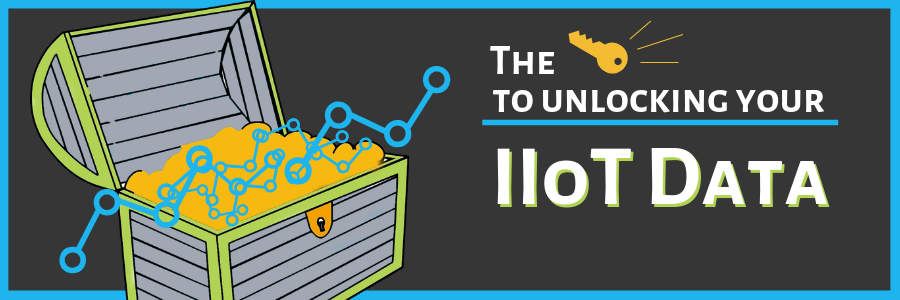By Layne Alfred, Marketing Associate
Ahh, the abounding promises of Industrial IoT: smooth processes, reduced downtime and zero errors. It seems that IIoT is disrupting the industrial sector in the best way by guaranteeing these improvements, but the fact is that most companies are not correctly or effectively implementing IIoT. The buzz around the concept has led many to believe it will, in itself, deliver the insights they seek, but IIoT only gathers quantitative, largely unstructured data through sensors. On top of this, the sheer volume of data being generated by the sensors every single second is enough to overwhelm your current analytics system.
If you think you would be able to understand and analyze terabytes of numerical data every single day on your own, you might be just fine without having to implement any additional technologies. However, most people I know wouldn’t be thrilled to hear that their legacy systems now had to support an influx of new data that they originally didn’t design the system for. If you’re one of these people, you just need one key in order to unlock the game-changing insights of IIoT: artificial intelligence (AI).
IIoT in itself is not intelligent and the data it produces is largely unstructured, so implementation is futile if you’re not correctly mining the data that’s being generated. This is where AI comes in. AI Business puts it perfectly: “AI is nothing without data; the Internet of Things is nothing but data.” AI is fueled by data– the more plentiful the data is, the smarter AI becomes. Since the data being delivered by IIoT sensors is often in the form of a string of numbers and letters, AI helps interpret the data and recognizes patterns so that a human can act on the information. Additionally, in regard to the huge amounts of latent data being generated, users can apply rules to make sure only relevant data is analyzed and is sent to the correct people who will know exactly what actions to take.
“AI is nothing without data; the Internet of Things is nothing but data.”
Prateek Joshi, CEO of Plutoshift, explains how AI helps uncover blind spots previously unknown to analysts because it actually bridges the data with business metrics.
“Bringing this data together and then applying AI algorithms unlocks insights and trends never before realized. Some of the common blind spots AI can help uncover include building a bridge between the asset behavior and revenue and creating key performance indicators that link to bottom line business metrics, which is the most important aspect of the work we’re doing. It’s not enough to just monitor assets; the data has to enable business users to achieve their goals.”
Joshi also highlights how IIoT without AI or another avenue for realizing data insights will force plant operators to continue to make “static rule of thumb” decisions. With AI, they can be proactive and propel the company’s development forward. After all, data is everything.
 Now that you know you’ll need AI to accompany your IIoT, how should you start? What comes first?
Now that you know you’ll need AI to accompany your IIoT, how should you start? What comes first?
Assess where your current data systems stand and understand that integration is key in your IIoT and AI implementation. In order to successfully integrate IIoT with your existing data systems and machines, you need to think about your IIoT implementation as an overall business initiative—a hefty one with many moving parts—and not as a technological initiative. You should have a clear idea of what specific initiatives you’re trying to tackle with IIoT. For example, if your company has a history of missing or incomplete data, a general mistrust among employees for the generated data or outdated analytics systems that are difficult to use, you’ll want to make foundational changes to your company before any IIoT implementation.
What’s even more, your budget might even be better spent in tackling analytics initiatives first to obtain quality data instead of jumping right ahead to IIoT. Basing your business decisions off quality, actionable data will probably generate more revenue than IIoT implementation if it’s something you don’t see already. Information Builders seconds that the loss of revenue due to incomplete data has devastating effects.
“The consequences of inaccurate or missing data are enormous. In a survey of 333 companies, Gartner pegged the losses resulting from poor data quality at $14.2 million each year on average, saying that companies lose more money in operational efficiency due to data quality issues than they spend on data warehouse and CRM initiatives.”
If you feel your data is in a good place but could benefit from more predictive maintenance and increased efficiency, higher customer satisfaction or more general control of your infrastructure, IIoT and AI implementation would definitely be able to deliver the insights you need.

Layne Alfred
Marketing Associate

